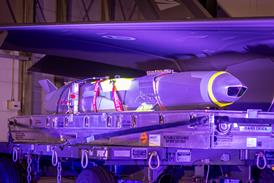MIKE PHELAN / LONDON
Study to form part of Tornado replacement programme
MBDA has been selected by the UK Ministry of Defence to investigate the feasibility of using the Airbus Military A400M airlifter as an air-launched cruise missile carrier as part of the Future Offensive Air System (FOAS) programme.
The two-year £5 million ($8 million) technology demonstration programme (TDP) is part of the MoD's much larger FOAS initiative to replace the Royal Air Force's Panavia Tornado GR4 strike aircraft from 2017.
FOAS is intended to develop a deep strike capability, elements of which - including unmanned combat air vehicles and the airlifter missile platform - are intended to provide the capability of deep strike without the associated risk of operating aircraft deep inside enemy airspace.
MBDA aims to demonstrate within the TDP the feasibility of the carriage and release of cruise missiles from large non-penetrating aircraft (LNPA) through high-fidelity modelling, simulation of preferred concepts and windtunnel testing.
The LNPA concept could form one element of the FOAS capability, and although the A400M will be used as the baseline platform for the feasibility study, the suitability of the Boeing C-17 and Lockheed Martin C-130J Hercules will also be evaluated.
The MoD is not due to make a decision on which concepts to pursue for FOAS until 2010, and says: "The concept is at a very early stage. We'll decide in 2005 whether to pursue it further."
However, MBDA hopes it can demonstrate feasibility and continue the programme through to a demonstration phase.
"MBDA's experience in long-range cruise missiles such as Storm Shadow means we would obviously like missiles to form an integral part of FOAS," says the company.
The 250km-plus (135nm)-range Mach 0.8 Storm Shadow, which was first used on Tornado GR4s in Iraq, is an obvious candidate to equip an LNPA (Flight International, 1-7 April).
The MBDA team includes BAE Systems Advanced Technologies, Cranfield Aerospace, Flight Refuelling, General Dynamics UK, Irvin-GQ, Lockheed Martin and Qinetiq.
A team lead by Smiths Aerospace also submitted a proposal for the study in January.
Source: Flight International












































